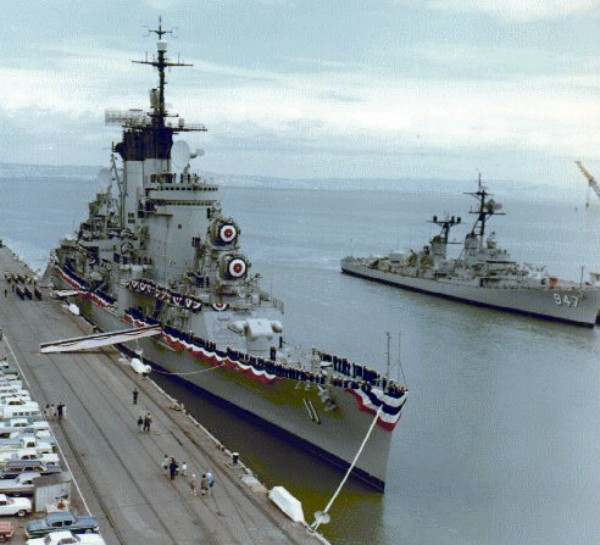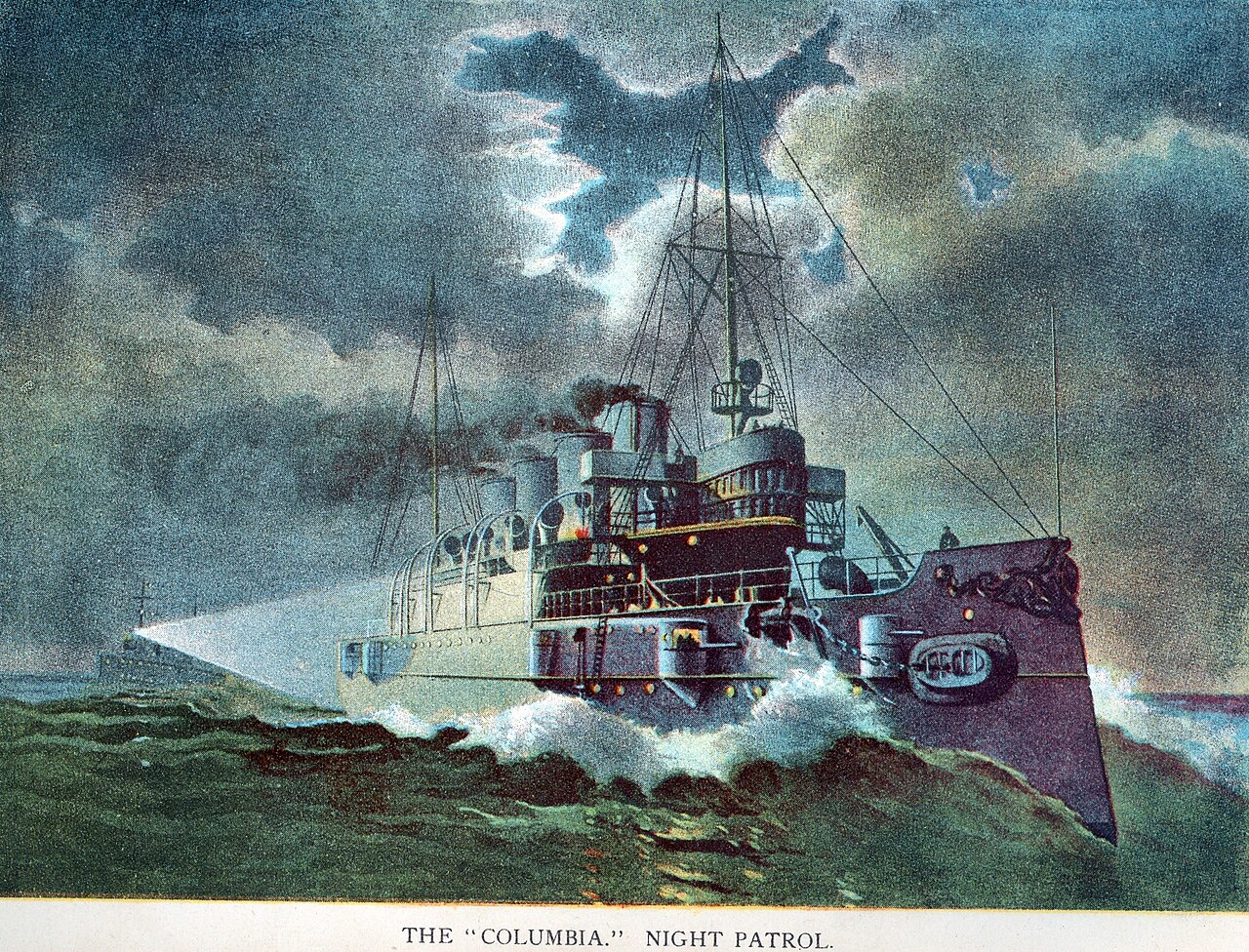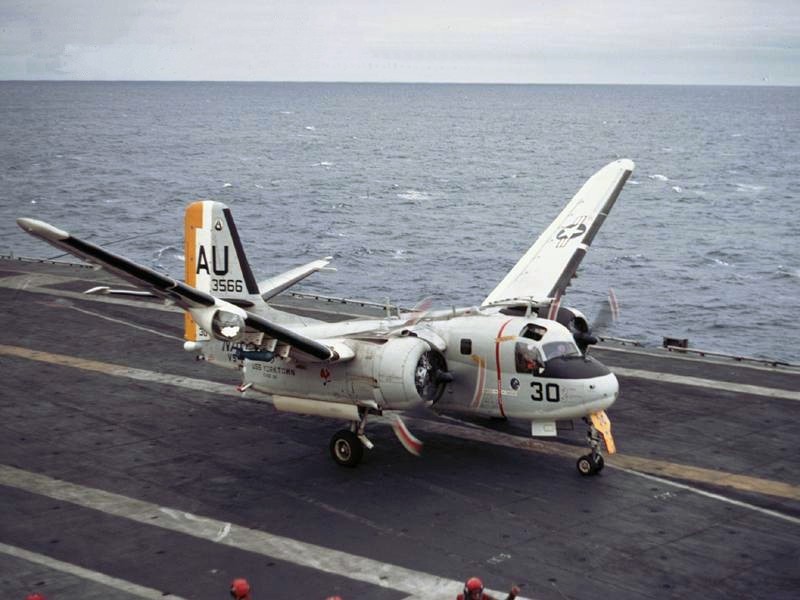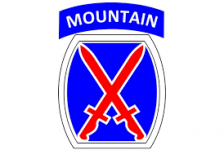Gamecock Fanatics
You are using an out of date browser. It may not display this or other websites correctly.
You should upgrade or use an alternative browser.
You should upgrade or use an alternative browser.
Countdown to Kickoff II: The Final 24 Days
- Thread starter Swayin
- Start date
These guys are pretty damned good.
USS Rigel (AR-11)
_in_port,_circa_in_the_1930s_(NH_1874).jpg/1280px-USS_Rigel_(AD-13)_in_port,_circa_in_the_1930s_(NH_1874).jpg)
Another unsung hero of the Pacific Fleet during WWII.
Sa-lute!
_in_port,_circa_in_the_1930s_(NH_1874).jpg/1280px-USS_Rigel_(AD-13)_in_port,_circa_in_the_1930s_(NH_1874).jpg)
https://en.wikipedia.org/wiki/USS_Rigel_(AD-13)USS Rigel (AD-13/ARb-1/AR-11) was an Altair-class destroyer tender named for Rigel, the brightest star in the constellation Orion.
Originally built in 1918 as SS Edgecombe by the Skinner and Eddy Corporation of Seattle, Washington for the United States Shipping Board, she was transferred to the United States Navy by Executive Order on 29 October 1921, delivered 16 November 1921, converted to a destroyer tender, and commissioned as USS Rigel on 24 February 1922 with Lieutenant E. G. Affleck in command.
1941–1942
Re-designated a repair ship, AR-11, on 10 April 1941, she underwent overhaul at Bremerton, Washington then sailed to Hawaii for more extensive repairs and alterations. By mid-July, she was at Pearl Harbor and was still in the yard on 7 December 1941. She was without her authorized armament and superstructure and was slightly damaged during the Japanese attack. Her crew, unable to fire, immediately turned their skills to rescue and salvage operations. Conversion work on Rigel was completed on 7 April 1942.
On 20 April, with four 3-inch guns mounted, she got underway for the South Pacific. Steaming first to Fanning Island, she disembarked U.S. Army units and material and embarked personnel of New Zealand's Pacific Island Force and civilian evacuees. On the 28th, she continued westward and on 16 May arrived at Auckland to add her equipment and personnel to the repair and construction facilities offered by that port.
Between then and November she converted merchant ships and tugboats to Navy use, repaired other merchantmen, installed and repaired guns on merchant ships; trained armed guard crews, served as flagship for Vice Admiral Robert L. Ghormley, and as store ship and receiving ship; provided printing facilities; assisted in the construction of shore facilities; and added ten 20 mm guns to her own armament, in addition to her assigned duties of repairing Allied warships and auxiliaries.
In November, she was again called on to substitute as a transport. On the 8th, she embarked Army units and on the 9th, she sailed for New Caledonia. Arriving at Nouméa on 14 November, she shifted to Espiritu Santo two days later and contributed her skills to the Guadalcanal campaign.
1943–1944
In mid-January 1943, she shifted to Efate, and, on 24 April, got underway to return to the South Pacific where the 7th Amphibious Force was being formed. Rigel arrived at Sydney on 1 May, moved on to Brisbane on the 15th and until 14 June helped take the pressure off repair facilities there. But the 7th Amphibious Force's first assault landing was imminent and Rigel's assistance was needed in the forward area. On 21 June the repair ship arrived in Milne Bay, New Guinea, and on the 22nd Rear Admiral Daniel E. Barbey, Commander, 7th Amphibious Force, raised his flag. On the 30th, the force landed troops on Woodlark and Kiriwina and the encirclement of Rabaul from the south was initiated.
For the next 6½ months Rigel remained at Milne Bay, repairing ships from LSTs, LCIs, and MTBs to tankers, cruisers, and battleships. By December, Allied forces had moved up the coast to dispute control of Vitiaz and Dampier Straits. In December, landings were made on New Britain at Arawe and Cape Gloucester, and in January 1944, at Finschhafen and Saidor in New Guinea. Rigel, no longer Admiral Barbey's flagship, soon followed.
Again bringing her vital equipment and trained men closer to the front, she moved to Cape Sudest, thence proceeded to Buna where her crew continued their round-the-clock schedule from 13 January until 9 June. From Buna she moved up the coast to Alexishafen, whence, in late August, she returned to Australia for a much needed overhaul. She was at Sydney during the initial thrust into the Philippines, but in November returned to New Guinea and continued her work at Hollandia, 22 November to 10 January 1945. On the latter date she got underway for the Philippines.
Rigel earned four battle stars during World War II.
Another unsung hero of the Pacific Fleet during WWII.
Sa-lute!
Last edited by a moderator:
USS Altair (AD-11)
,_in_1921_(NH_57796).jpg/1280px-USS_Altair_(AD-11),_in_1921_(NH_57796).jpg)
_moored_at_Port_of_Spain,_Trinidad,_on_1_October_1942_(80-G-31669).jpg/1280px-USS_Altair_(AD-11)_moored_at_Port_of_Spain,_Trinidad,_on_1_October_1942_(80-G-31669).jpg)
https://en.wikipedia.org/wiki/USS_Altair_(AD-11)
,_in_1921_(NH_57796).jpg/1280px-USS_Altair_(AD-11),_in_1921_(NH_57796).jpg)
The USS Altair (AD-11) in what appears to be Measure 12 (modified) camouflage, moored at Port of Spain, Trinidad, on 1 October 1942 tending the USS Spry (PG-64), the USS Bainbridge (DD-246), and the USS Goff (DD-247), along with the Dutch minelayer/patrol vessel HNLMS Jan van Brakel (M-80). (below)The USS Altair (AD-11) was the lead ship of a class of three destroyer tenders. She was named for Altair, the brightest star in the constellation Aquila.
United States Shipping Board, 1919–1921
The Altair was laid down as the steel-hulled, single-screw freighter ID-4156 Edisto under a United States Shipping Board (USSB) contract on 18 December 1918 at Seattle, Washington, by the Skinner and Eddy Corporation. Launched on 10 May 1919, the Edisto came under naval scrutiny in the 13th Naval District, being given the identification number (Id. No.) 4156 and initially earmarked for potential service as a collier. After a brief period of operation by the USSB, the Edisto was transferred to the Navy by executive order on 29 October 1921 and renamed the Altair on 2 November 1921. Classified as a destroyer tender, AD-11, the ship was delivered to the Navy on 5 December 1921 and commissioned at the New York Navy Yard the following day, 6 December 1921, Commander James H. Comfort in command.
World War II
1939–1941
When World War II began in Europe in the autumn of 1939, the Altair was tending Destroyer Squadrons 4 and 6, of Destroyer Flotilla 2, Battle Force, still based on San Diego. In March 1940, however, to service the destroyers of the Hawaiian Detachment sent to Pearl Harbor in December of the previous year, the Altair was shifted to Pearl. En route to her new duty station, she served as plane guard for Navy Consolidated PBY Catalina flying boats being ferried to Oahu, arriving at Pearl Harbor on 16 April 1940. She tended destroyers there through the end of the year 1940 and into 1941 as the fleet based permanently on Pearl Harbor following the conclusion of Fleet Problem XXI.
1941–1943
Overhauled at Mare Island Navy Yard from 6 April to 6 June 1941, the Altair returned to Pearl Harbor on 26 June. For the next three months the destroyer tender discharged her duty there until she departed Hawaiian waters on 30 September for the west coast. Pausing briefly at San Diego from 12–18 October, the ship pushed south, transited the Panama Canal on 2–3 November 1941, and arrived at her new duty station, Hamilton, Bermuda, on 11 November 1941, to provide support for destroyers operating on patrols in the North Atlantic.
After the Japanese attack upon the Pacific Fleet at Pearl Harbor brought the United States into World War II, the Altair maintained a routine of carrying out upkeep and repairs on Atlantic Fleet destroyers at Bermuda that continued into the summer of 1942.
Underway for San Juan, Puerto Rico, on 3 July 1942, escorted by the destroyers USS Bernadou and Cole, the Altair arrived at her destination on the 6th, detaching the two destroyers and picking up another, the Hilary P. Jones, which escorted the tender to Trinidad, where she arrived on 11 July. Except for brief periods at Aruba and Curaçao, in the Dutch West Indies, in early September, the Altair tended destroyers at Trinidad through mid-July 1943.
_moored_at_Port_of_Spain,_Trinidad,_on_1_October_1942_(80-G-31669).jpg/1280px-USS_Altair_(AD-11)_moored_at_Port_of_Spain,_Trinidad,_on_1_October_1942_(80-G-31669).jpg)
https://en.wikipedia.org/wiki/USS_Altair_(AD-11)
USS Chicago (CG-11)
_underway_in_the_Western_Pacific_on_14_March_1978_(USN_1172569).jpg)
Formerly CA-136. (below)
_off_the_Philadelphia_Naval_Shipyard_on_7_May_1945_(19-N-84410).jpg/1920px-USS_Chicago_(CA-136)_off_the_Philadelphia_Naval_Shipyard_on_7_May_1945_(19-N-84410).jpg)
I guess the new aluminum superstructure made sense from a balance standpoint after the main battery guns were removed.
Probably wouldn't last too long in a real naval battle, though.
_underway_in_the_Western_Pacific_on_14_March_1978_(USN_1172569).jpg)
Formerly CA-136. (below)
_off_the_Philadelphia_Naval_Shipyard_on_7_May_1945_(19-N-84410).jpg/1920px-USS_Chicago_(CA-136)_off_the_Philadelphia_Naval_Shipyard_on_7_May_1945_(19-N-84410).jpg)
Rebuilt as missile cruiser
On 1 November 1958, Chicago was reclassified CG-11 and towed to San Francisco Naval Shipyard to begin a five-year conversion (20 months longer than Columbus and 13 months longer than Albany) to a Guided Missile Cruiser. Begun on 1 July 1959, the entire superstructure was removed and replaced with new aluminum compartments, modernized electronic systems, and an improved Naval Tactical Data System (NTDS) equipped combat information center.
_and_other_ships_at_the_San_Francisco_Navy_Yard_in_1959.jpg/1280px-USS_Chicago_(CG-11)_and_other_ships_at_the_San_Francisco_Navy_Yard_in_1959.jpg)
Representative of the new technological focus on guided missiles, Chicago was refitted with Tartar and Talos SAM stowage, loading, launching, and guidance systems. Two triple torpedo tubes, an ASROC launcher, two 5 in/38 cal guns, and two antisubmarine helicopters rounded out the cruisers' modifications.
_during_conversion_at_San_Francisco_Navy_Yard_1960.jpg/1280px-USS_Chicago_(CG-11)_during_conversion_at_San_Francisco_Navy_Yard_1960.jpg)
https://en.wikipedia.org/wiki/USS_Chicago_(CA-136)Designed to provide long-range air, surface, and sub-surface defense for task forces, Chicago was recommissioned at the San Francisco Naval Shipyard on 2 May 1964, and was assigned to Cruiser-Destroyer Flotilla Nine, Pacific Fleet.

I guess the new aluminum superstructure made sense from a balance standpoint after the main battery guns were removed.
Probably wouldn't last too long in a real naval battle, though.
Last edited by a moderator:
USS Gilmer (APD-11). Formerly DD-233.
_underway_in_Hampton_Roads,_Virginia_(USA),_in_October_1922_(NH_53732).jpg/1280px-USS_Gilmer_(DD-233)_underway_in_Hampton_Roads,_Virginia_(USA),_in_October_1922_(NH_53732).jpg)
Warfighter Tin Can.
Sa-lute!
_underway_in_Hampton_Roads,_Virginia_(USA),_in_October_1922_(NH_53732).jpg/1280px-USS_Gilmer_(DD-233)_underway_in_Hampton_Roads,_Virginia_(USA),_in_October_1922_(NH_53732).jpg)
https://en.wikipedia.org/wiki/USS_Gilmer_(DD-233)World War II
Gilmer was at sea off Puget Sound when the Japanese attacked Pearl Harbor on 7 December 1941. She immediately began antisubmarine patrol and escort duties. In early June 1942, she took part in the opening stages of the Aleutian Islands campaign. She entered drydock 13 November 1942. She was re-designated as a high-speed transport, APD-11, on 22 January 1943 following conversion. She sailed from Seattle 29 January via San Diego for Pearl Harbor, arriving 13 February, and subsequently escorted merchantmen to Espiritu Santo, where she moored 9 March and commenced amphibious training exercises with the 4th Marine Raiders Battalion.
On 12 May the ship sailed from Hollandia to embark underwater demolition teams (UDT) at Pearl Harbor and debarked them 14 June 1944 at the initial assault on Saipan. Two days later she discovered and sank four Japanese cargo ships, taking 24 prisoners, escaping serious damage. Tinian Town was bombarded 23 June and UDT operations off that island continued until 14 July when Gilmer, along with William C. Miller, formed an offensive antisubmarine warfare group and sank I-55 in 18°18′N 146°26′E. DANFS listed this submarine as I-6, but I-6 is believed to have been lost to friendly fire at the end of June 1944.
Gilmer sailed from Tinian 12 August for Pearl Harbor and until January 1945 conducted demolition and reconnaissance training with UDT teams in Hawaiian waters. She sailed 10 January as flagship for rehearsal exercises at Ulithi, and on 16 February closed Iwo Jima for the initial amphibious assaults. UDT teams were landed on the eastern and western beaches, and Gilmer screened Tennessee as the big ship bombarded Japanese defenses on Iwo Jima.
Patrolling and screening activities continued through 24 February, when Gilmer sailed for Leyte, arriving four days later. After touching Ulithi, she took part in the Okinawa operation, closing that island 25 March 1945 as flagship of the UDT's. The next day, a kamikaze hit her galley deckhouse, killing one and wounding three crewmen. Gilmer supported the invasion until 9 April when she sailed for repairs at Pearl Harbor, but returned to Okinawa 4 July to recommence patrolling duties.
Following antisubmarine screening assignments for convoys bound from the Philippines to Okinawa, Gilmer moored at Nagasaki 13 September after Japan's surrender to carry prisoners of war from there to Okinawa.
Awards
Gilmer received seven battle stars for World War II service. Awarded a Navy Unit Commendation for participating in seven specific operations during World War II.
Warfighter Tin Can.
Sa-lute!
Last edited by a moderator:
Looks like we've started a trend, Swayin'. How to win friends and influence people. LOL
Pink tutus they ain't.
https://www.abc4.com/sports/utes-football-to-wear-uss-salt-lake-city-uniforms-during-nov-game/The University of Utah Football team will don uniforms paying tribute to the USS Salt Lake City, a heavy cruiser during World War II. While we will not see the uniforms on the Utes until their November game against the Oregon Ducks, Utes Equipment unveiled the uniforms on Tuesday.
According to the Utah Division of State History, the USS Salt Lake City “helped gain revenge for the sinking of the USS Utah at Pearl Harbor.” The cruiser named after Utah’s capital would unofficially be credited with taking part in more naval engagements than any ship in the fleet, even being dubbed “the one-ship fleet.” The USS Salt Lake City “survived everything, including its own nation’s most destructive weapons.”
The Division of State History reports the USS Salt Lake City is credited for being the first ship to fire on Japanese-held territory when it apparently opened fire on Wotje Island in retaliation for the attack on Pearl Harbor. The vessel launched in January 23, 1929, and continued serving the U.S. Navy until the late 1940s.
Pink tutus they ain't.
Last edited by a moderator:
LOL, sweet!Looks like we've started a trend, Swayin'. How to win friends and influence people. LOL
We need to have USS Columbia unis against the Taters.LOL, sweet!
Get there, Tanner.
Make it happen, Ray!We need to have USS Columbia unis against the Taters.
Get there, Tanner.
USS Columbia (C-12). Somehow missed this one.
.jpg/1280px-Detroit_Photographic_Company_(1029).jpg)

https://en.wikipedia.org/wiki/USS_Columbia_(C-12)
.jpg/1280px-Detroit_Photographic_Company_(1029).jpg)
The fourth USS Columbia (C-12/CA-16) was a protected cruiser in the United States Navy during the Spanish–American War and World War I. She was the lead ship of her class of two cruisers; her sister ship was Minneapolis (C-13). The class was originally designed with three funnels; however, Columbia was built with four and Minneapolis with two. This may have been to make them resemble specific passenger liners.
Columbia was launched 26 July 1892 by William Cramp & Sons Ship & Engine Building Company, Philadelphia; sponsored and christened by Miss Edith H. Morton, daughter of Vice President Levi P. Morton; and commissioned 23 April 1894, Captain George Watson Sumner in command.
Columbia joined the North Atlantic Squadron, and from 30 July 1894 to 5 January 1895 cruised to protect American interests in the Caribbean. She participated in the intervention in Nicaragua from July to August 1894. She visited Europe in the summer of 1895 and represented the United States at the ceremonial opening of the Kiel Canal in June. Returning to the east coast in August, she operated in the western Atlantic until going in ordinary, in reserve at Philadelphia Navy Yard 13 May 1897.
Recommissioned 15 March 1898 for service in the Spanish–American War, Columbia patrolled along the Atlantic coast and in the West Indies until 26 August. She convoyed troops to Puerto Rico and aided in its occupation between July and 14 August. Columbia was decommissioned and placed in reserve at Philadelphia Navy Yard 31 March 1899.
Following recommissioning on 31 August 1902, Columbia served as receiving ship at New York and from 9 November 1903 as a part of the Atlantic Training Squadron. Once more out of commission at Philadelphia between 3 May 1907 and 22 June 1915, the cruiser then joined the Submarine Flotilla as flagship. After cruising between the various Atlantic submarine bases on inspection tours, she was detached 19 April 1917.
Columbia patrolled off the Delaware Breakwater from 21 April 1917 as flagship of Squadron 5, Patrol Force until July when she joined the Cruiser Force as a convoy escort. Between 1 January and 13 November 1918 she made five Atlantic escort voyages, protecting the passage of men and supplies for the American Expeditionary Force in France. On her detachment 7 January 1919, she became flagship of Squadron 2, Destroyer Force, Atlantic Fleet, operating along the East Coast and in the Caribbean. She was relieved as flagship on 29 May but continued cruising until decommissioned at Philadelphia Navy Yard 29 June 1921.
Reclassified CA-16, 17 July 1920, she was renamed Old Columbia 17 November 1921, struck 21 June 1922 and sold 26 January 1922.

https://en.wikipedia.org/wiki/USS_Columbia_(C-12)
Nice!
Fran Tarkenton


Last edited by a moderator:
Eli Manning


Ricky Rudd


USS Yorktown (CV-10). The Fighting Lady.
_underway_at_sea_on_10_March_1963.jpg/1280px-USS_Yorktown_(CVS-10)_underway_at_sea_on_10_March_1963.jpg)
_on_15_April_1943.jpg)
Great shot of the camouflage color if you're into building ship models of that era. Also of the blue stained or painted flight deck. I am guessing the wood was stained but I don't know for sure.
Much of the The Fighting Lady color movie footage has appeared in countless war movies over the years in the period before CG animation of recent times.
LCDR James H. "Jimmy" Flatley, Commander of Air Group 5 (CAG-5), sits in his Grumman F6F-3 Hellcat (code "00"), painted in a tricolor-scheme (certainly an "in the field" application) before takeoff. An Aviation Boatswain Mate stands ready to remove chock from wheels. (below)
,_31_August_1943_(80-G-K-14833).jpg)
A non-specular insignia white diagonal stripe on the tail and the green propeller hub signified CAG-5 aboard the Yorktown. Flatley's plane in this picture was "the CAG bird". In modern times all Navy aircraft are painted flat grey, except for "the CAG bird", which has the squadron's insignia painted on the tail of the aircraft. The special paint markings were more simple in WWII.
A Grumman S2E Tracker ASW aircraft begins folding its wings while taxiing after landing on the Yorktown in 1969. (below)

The special colors on the tail may have signified that this was "the CAG bird" for the VS-27 Pelicans, the squadron the plane belonged to. However, this was before Navy went to an all-flat grey paint scheme in the 1980s and 1990s.
The Yorktown at Patriots Point in Charleston. (below)
_panorama_2012.jpg/1920px-USS_Yorktown_(CVS-10)_panorama_2012.jpg)
https://en.wikipedia.org/wiki/USS_Yorktown_(CV-10)
_underway_at_sea_on_10_March_1963.jpg/1280px-USS_Yorktown_(CVS-10)_underway_at_sea_on_10_March_1963.jpg)
The crew of the U.S. Navy aircraft carrier USS Yorktown (CV-10) stands at attention as the National Ensign is raised, during commissioning ceremonies at the Norfolk Navy Yard, Virginia, on 15 April 1943. Yorktown is freshly painted in Camouflage Measure 21. Two steel-hull submarine chasers (PC) are at right, on the other side of the pier. (below)USS Yorktown (CV/CVA/CVS-10) is one of 24 Essex-class aircraft carriers built during World War II for the United States Navy. She was named after the Battle of Yorktown of the American Revolutionary War, and is the fourth U.S. Navy ship to bear the name. Initially to have been named Bonhomme Richard, she was renamed Yorktown while still under construction to commemorate the loss of USS Yorktown (CV-5) during the Battle of Midway in June 1942. Yorktown was commissioned in April 1943, and participated in several campaigns in the Pacific Theater of Operations, earning 11 battle stars and the Presidential Unit Citation.
Decommissioned shortly after the end of the war, she was modernized and recommissioned in February 1953 as an attack carrier (CVA), and served with distinction during the Korean War. The ship was later modernized again with a canted deck, eventually becoming an anti-submarine carrier (CVS) and served for many years in the Pacific, including duty in the Vietnam War, during which she earned five battle stars. Late in her career, the carrier served as a recovery ship for the Apollo 8 space mission, and was used in the film Tora! Tora! Tora!, which recreated the Japanese attack on Pearl Harbor, and in the science fiction film The Philadelphia Experiment.
Yorktown was decommissioned in 1970 and in 1975 became a museum ship at Patriots Point, Mount Pleasant, South Carolina, where she was designated a National Historic Landmark.
_on_15_April_1943.jpg)
Great shot of the camouflage color if you're into building ship models of that era. Also of the blue stained or painted flight deck. I am guessing the wood was stained but I don't know for sure.
Much of the The Fighting Lady color movie footage has appeared in countless war movies over the years in the period before CG animation of recent times.
LCDR James H. "Jimmy" Flatley, Commander of Air Group 5 (CAG-5), sits in his Grumman F6F-3 Hellcat (code "00"), painted in a tricolor-scheme (certainly an "in the field" application) before takeoff. An Aviation Boatswain Mate stands ready to remove chock from wheels. (below)
,_31_August_1943_(80-G-K-14833).jpg)
A non-specular insignia white diagonal stripe on the tail and the green propeller hub signified CAG-5 aboard the Yorktown. Flatley's plane in this picture was "the CAG bird". In modern times all Navy aircraft are painted flat grey, except for "the CAG bird", which has the squadron's insignia painted on the tail of the aircraft. The special paint markings were more simple in WWII.
A Grumman S2E Tracker ASW aircraft begins folding its wings while taxiing after landing on the Yorktown in 1969. (below)

The special colors on the tail may have signified that this was "the CAG bird" for the VS-27 Pelicans, the squadron the plane belonged to. However, this was before Navy went to an all-flat grey paint scheme in the 1980s and 1990s.
The Yorktown at Patriots Point in Charleston. (below)
_panorama_2012.jpg/1920px-USS_Yorktown_(CVS-10)_panorama_2012.jpg)
https://en.wikipedia.org/wiki/USS_Yorktown_(CV-10)
Last edited by a moderator:




